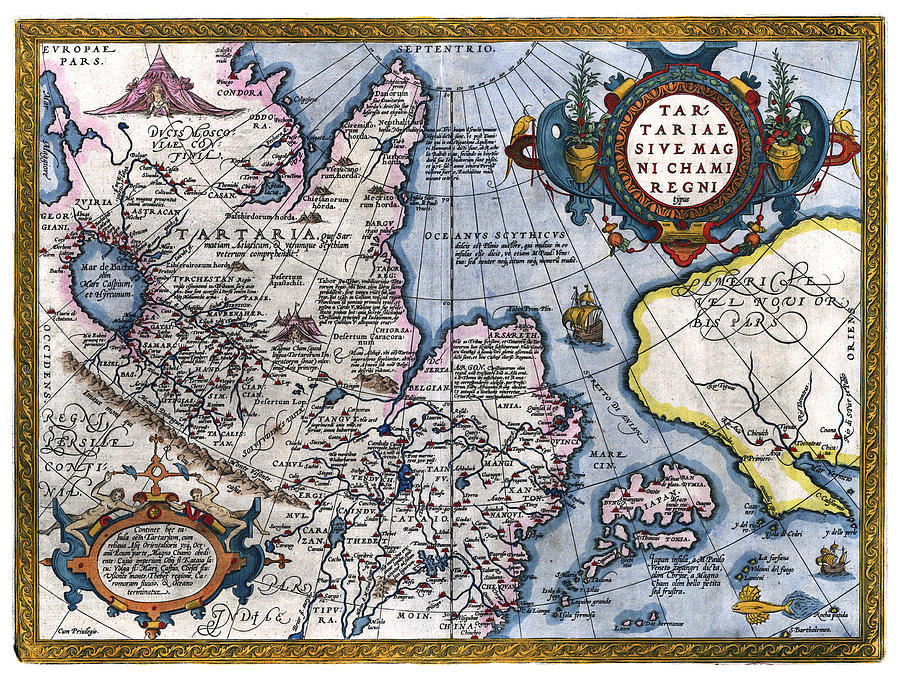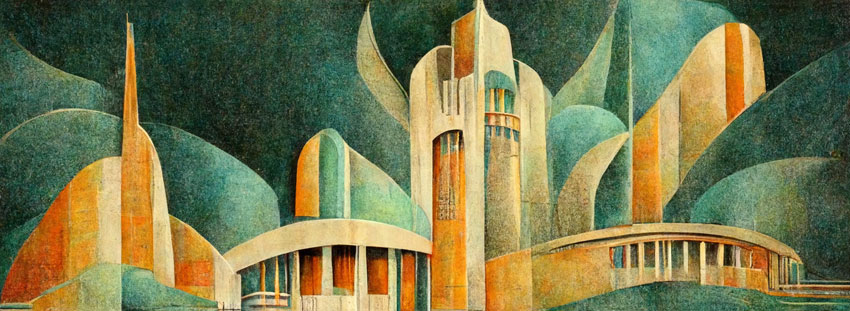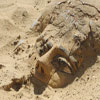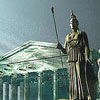A Civilization That Vanished
 by Charles Hapgood
by Charles Hapgood
The evidence presented by the ancient maps appears to suggest the existence in remote times, before the rise of any of the known cultures, of a true civilization, of a comparatively advanced sort, which either was localized in one area but had worldwide commerce, or was, in a real sense, a worldwide culture. This culture, at least in some respects, may well have been more advanced than the civilizations of Egypt, Babylonia, Greece, and Rome. In astronomy, nautical science, map-making and possibly ship-building, it was perhaps more advanced than any state of culture before the 18th Century of the Christian Era. It was in the 18th Century that we first developed a practical means of finding longitude. It was in the 18th Century that we first accurately measured the circumference of the earth. Not until the 19th Century did we begin to send out ships for purposes of whaling or exploration into the Arctic or Antarctic Seas. The maps indicate that some ancient people may have done all these things.
Mapping on such a scale as this suggests both economic motivations and economic resources. Organized government is indicated. The mapping of a continent like Antarctica implies much organization, many exploring expeditions, many stages in the compilation of local observations and local maps into a general map, all under a central direction. Furthermore, it is unlikely that navigation and map-making were the only sciences developed by this people, or that the application of mathematics to cartography was the only practical application they made of their mathematical knowledge.
Whatever its attainments may have been, however, this civilization disappeared, perhaps suddenly, more likely by gradual stages. Its disappearance has implications we ought to consider seriously. If I may be permitted a little philosophizing, I would like to suggest that there are four principal conclusions to which we are led.
1. The idea of the simple linear development of society from the culture of the paleolithic (Old Stone Age) through the successive stages of the neolithic (New Stone Age), Bronze, and Iron Ages must be given up. Today we find primitive cultures co-existing with advanced modern society on all the continents–the Bushmen of Australia, the Bushmen of South Africa, truly primitive peoples in South America, and in New Guinea; some tribal peoples in the United States. We shall now assume that, some 20,000 or more years ago, while paleolithic peoples held out in Europe, more advanced cultures existed elsewhere on the earth, and that we have inherited a part of what they once possessed, passed down from people to people.
2. Every culture contains the seeds of its own disintegration. At every moment forces of progress and of decay co-exist, building up or tearing down. All too evidently the destructive forces have often gained the upper hand; witness such known cases as the extinctions of the high cultures of ancient Crete, Troy, Babylon, Greece, and Rome, to which it would be easy to add twenty others. And, it is worth noting that Crete and Troy were long considered myths.
3. Every civilization seems eventually to develop a technology sufficient for its own destruction, and hitherto has made use of the same. There is nothing magical about this. As soon as men learned to build walls for defense, other men learned how to tear them down. The vaster the achievements of a civilization, the farther it spreads, the greater must be the engines of destruction; and so today, to counter the modern worldwide spread of civilization, we have atomic means to destroy all life on earth. Simple. Logical.
4. The more advanced the culture, the more easily it will be destroyed, and the less evidence will remain. Take New York. Suppose it was destroyed by a hydrogen bomb. After some 2,000 years, how much of its life could anthropologists reconstruct? Even if quite a few books survived, it would be quite impossible to reconstruct the mental life of New York.
When I was a youth I had a plain simple faith in progress. It seemed to me impossible that once man had passed a milestone of progress in one way that he could ever pass the same milestone again the other way. Once the telephone was invented it would stay invented. If past civilizations had faded away it was just because they had not learned the secret of progress. But Science meant permanent progress, with no going back, and each generation was pressing on further and further, rolling back the frontiers of the unknown. This process would go on forever.
Most people still feel this way, even in spite of two world wars, and the threat of universal annihilation in a third. The two world wars shook the faith of many in progress, but even without the very sad story of the century we live in, there never was any good basis for the belief that progress is an automatic process. Progress or decline in civilization is just a balance sheet between what the human race creates in a given period and what it destroys. Sometimes for a while our race creates more than it destroys, and there is “progress”; then for a while it destroys more effectively–more scientifically, let us say–than it creates, and we have decline. Compare, for example, the time it took for saturation bombing by the American and British Air Forces in World War II to destroy most of the cities of Germany, including golden Dresden, and its priceless heritage of medieval architecture, with the time it took to build those cities. Think of the destruction, in one instant, by American bombers, of the oldest monastery in the West, the Abbey of Monte Cassino.
But the sad story of destruction, whereby man destroys almost as much as he creates (even in the best of times), does not begin with the 20th Century. Consider the question of libraries. There is something particularly upsetting about the burning of a library. Somehow it symbolizes the whole process. The ancient world of Rome and Greece had many libraries. The most famous of these was the Library of Alexandria, founded in Egypt by Alexander the Great three centuries before the Christian Era. Five hundred years later it is said to have contained about one million volumes, and into it was gathered the entire knowledge of the ancient western world–the technology, the science, the literature, and the historical records.
This library, the heritage of untold ages, was burned. The details are not very well known, but we think there were at least three burnings. The first happened when Julius Caesar captured Alexandria. The citizens resisted him, and in the battle about a third of the Library was destroyed. Caesar is said to have called a public meeting of the citizens and lectured them, sadistically accusing them of being guilty of the destruction–because they had resisted him! In his view Rome had a perfect right to conquer Egypt, and so the Alexandrians were guilty of misconduct in resisting him. This is the way people still think today.
There is evidence that most of the library-restored and enormously enlarged after the time of Julius Caesar–was destroyed by a Christian mob, inflamed by the preaching of a fanatical bishop, who pointed out to them–rightly, of course–that the library was no more than a repository of heathen teachings, and therefore a veritable time bomb, ticking away, preparing an explosion that could wreck the Christian world. But how can we afford to point the finger at the ignorant mob? We have had our book-burnings in the 20th Century. And I don’t refer only to Hitler’s infamous Burning of the Books. The libraries of America are combed relentlessly by gimlet-eyed agents of various self-appointed saviors of morality and religion. The books just disappear off the shelves! Thousands of them, every year! And, of course, American libraries have recently been the particular objects of anti-American mobs in several countries.
The final chapter in the destruction of the Library of Alexandria was a burning carried out by the Arabs after their conquest of Egypt in the 7th Century. There are two stories. According to one, the conquering Caliph said, on being asked what to do with the library, that anything in it contrary to Islamic teaching should be destroyed, as everything else was in the Koran already. The library was therefore entirely destroyed (100:95-97). The other version is that the hot, dusty, dirty Arab legions, just out of the desert, found the enormous Roman baths of the capital city ready for use, but out of fuel for heating the water, and that the parchments from the library furnished the fuel. Sad as this reason for the destruction was, it was at least morally more justifiable than the others.
The Romans were guilty of another destruction of a library, which is important for our story. In the year 146 B.C. they burned the great city of Carthage, their ancient enemy and their incalculable superiority in everything relating to science. The library of Carthage is said to have contained about 500,000 volumes, and these no doubt dealt with the history and the sciences of Phoenicia as a whole.
If the reader asks, how much of the total of ancient knowledge was lost by these and innumerable other acts of destruction, we will say 90 percent or more. A few facts may give him a general idea. The most famous scientist of ancient times was Aristotle; his thought dominated the world for fifteen hundred years. He wrote many works, and it might be thought that these works, at least, would have been preserved from destruction. Not so. Only one work of his survives, the Constitution of Athens. All his other so-called “works” are only edited and reedited versions of his students’ notes. As I think of the kind of notes most of my students take in lectures, I shudder through and through, and wonder how much of Aristotle’s real thought really does survive. Furthermore, Aristotle wrote many literary works that were considered marvels of style. All of these are lost.
Plato is an equally famous figure in the history of civilization. His dialogues, including his great Republic, have survived. But how many know that these were only his popular works? Every one of those he regarded as his serious scientific and technical works has been lost. With the great Greek tragedians, Aeschylus, Euripides, Sophocles, the story is the same. We possess only a handful–about 10 percent–of the plays they wrote.
What we have, then, of ancient cultural products is only a sample and not necessarily a representative sample either. On the contrary, whole aspects of ancient culture have been consigned to oblivion. What fragments we have come from books considered of value to the people who dominated the Church and State in the centuries after the dissolution of the ancient civilization. The churchmen were interested in moral questions; the educated laymen–mostly aristocrats–continued to devote themselves to the great classics of arts and literature. Science, however, was neglected.
But if it is true that we have lost so much, still we have preserved much more than some people suppose. When I began this work I was aware of no definite evidence for the existence of an ancient advanced world civilization, though I was aware that others believed it had existed. Now that I have found, in the maps, evidence I accept as decisive in answering this question in the affirmative, I see additional evidence on every hand.
The reader will quite naturally wonder how, if once a great civilization existed over most of the earth, it could disappear leaving no traces except these maps?
Excerpt from Maps Of The Ancient Sea Kings
To continue reading see full pdf chapter here.
Could the same above apply to Tartaria?

TARTARIA MAP: HOLY BOOKS, PYRAMIDS AND MORE SECRETS UNEARTHED
HEARD OR BEEN MADE AWARE OF TARTARIA YET? … BUCKLE UP PEOPLE!
 How Did They Pull It Off?
How Did They Pull It Off?
 Other Resources
Other Resources
Mongolia, Russia, and Tartaria 1737
A Voyage Into Tartary by Heliogenes 1689
A Voyage Of The Emperor Of China Into The Eastern Tartary 1682
One World Tartarians by James W. Lee
The Journey of William of Rubruck To The Eastern Parts of the World 1253-55 – Tartaria
A Pedestrian Journey Through Russia And Siberian Tartary by Capt John Dundas Cochrane 1824
Posted in Other Topics, True History of Manwith comments disabled.





